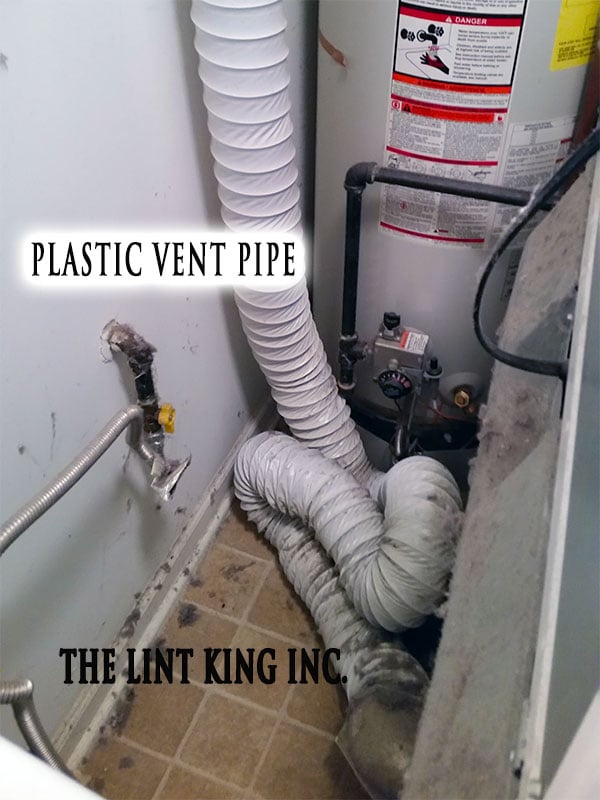Clothes Dryer Vent Safety & Installation Tips
The concealed rigid metal ducting length shall not exceed 35 feet (25′ for IRC). Deduct 5 feet from the allowable length for every 90-degree elbow and two and a half feet for every 45-degree fitting (the Dryer-Ell is an exception under 2006 IRC Section M1502.6, 2009 IMC Section 504.6.4 and 2009 IRC Section M1502.4). These lengths may vary per local codes and dryer manufacturers’ recommendations.
Dryer venting shall be independent of any other systems (chimneys or exhaust vents) to prevent fire spread.
Terminating dryer venting must be done on the exterior with a proper hood or roof cap equipped with a backdraft damper. Small orifice metal screening should not be part of the hood or roof cap, as this will catch lint and block the opening. The hood opening should point down and exhibit 12 inches of clearance between the bottom of the hood and the ground or obstructions.
 Plastic Dryer Duct Safety Issue
Plastic Dryer Duct Safety Issue
Clothes Dryer Vent Safety begins with routine maintenance. And YOU NEED IT!
Because backpressure in the clothes dryer exhaust vent pipe will build up over time.
Additionally, the Plastic Flex Duct,�a spring wire covered with plastic, should be replaced! I�ve seen this material used in older homes.
Furthermore, I�ve observed a variety of materials that present a safety hazard in your home.
Learn More About Clothes Dryer Safety
Dryer Vent Cleaning Experts